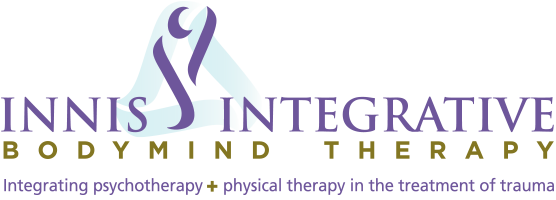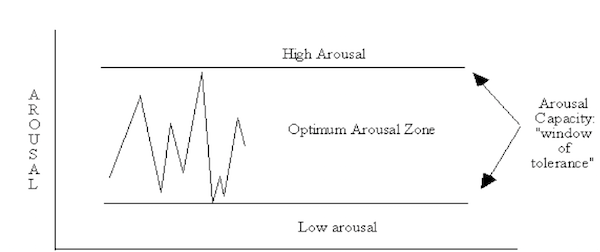Are you feeling like something is holding you back from fully engaging in life? Do you find that talking about the issue doesn’t seem to help?
Have you heard about somatic therapy but just don’t know what it is or if it is safe for you?
Are you afraid that if you start addressing old memories, or worse, experience the emergence of new ones, you will become flooded or overwhelmed and unable to manage your day-to-day responsibilities?
These are all good questions and important ones in the process of finding a psychotherapist whose approach to counseling will work best for you.
How Can Somatic Therapy Help?
I like to think of psychotherapy as a wagon wheel with many spokes, or paths, leading to the hub, or mental health. There are many effective approaches to psychotherapy. Somatic psychotherapy is a holistic therapeutic approach. It incorporates a person’s mind, body, brain, spirit, and emotions in the healing process. Like traditional psychotherapy, somatic psychotherapy addresses the thinking, emotional and behavioral elements of trauma, worry, and “stuckness.” Unlike traditional psychotherapy, somatic psychotherapy engages body awareness as the primary portal into the system leading to the hub of wellbeing.
Somatic therapy can be helpful in addressing a range of issues. It has been found to be particularly effective in work with trauma, posttraumatic stress disorder (PTSD), dissociation, identity issues, and affect regulation. It works to improve emotional regulation, address relationship concerns, decrease symptoms of anxiety, depression, and increase self-confidence. Somatic therapy may help you experience greater self-awareness and connection to both yourself and others. The use of body-centered psychotherapy has become an important part of an integrated approach to the treatment of autonomic nervous system (ANS) dysregulation associated with trauma, sexual abuse, posttraumatic stress (PTS), and chronic pain.
What is Autonomic Nervous System dysregulation?
The autonomic nervous system is the part of our nervous system that functions automatically, below our level of awareness. It regulates bodily functions such as heart rate, digestion, respiration, pupil response, unconscious muscle tension, and arousal. It is directly linked to the fight-flight-freeze response. This system can become dysregulated when we encounter trauma. This dysregulation can show up in basically two extremes: stuck “on”, as in the fight/flight response and stuck “off”, as with the freeze response.
The stuck “on” dysregulation is associated with the sympathetic branch of the nervous system (SNS) and can be felt as anxiety, panic, mania, hypervigilance, sleeplessness, dissociation, attention deficit, OCD, emotional flooding, chronic pain, hostility/rage, etc. The SNS is responsible for mobilizing us, most specifically, mobilizing us out of danger. But when a traumatic experience is not completely resolved, the residual activation can keep you locked in a constant state of readiness and reactivity. You might sense it like “something bad can happen at any moment.”
Being stuck “off” can show up as depression, a flat affect, feeling lethargic, exhausted, low motivation, chronic fatigue, dissociation, low blood pressure, and many of the complex chronic syndromes. This is the parasympathetic (PNS) branch of the autonomic nervous system. In a healthy state of functioning, it is designed to bring the body back to rest, digest, and recovery after surges of sympathetic activity. When it goes awry, the system slows or shuts down too much, or “depresses” itself at the slightest trigger. This feeling of shut down often follows feelings of overwhelm, extreme activation, or fear etc.
It is possible that you may actually feel both, oscillating between the two extremes.
ANS dysfunction can be restored to regulation. You can gain or regain a feeling of calm confidence. Many trauma specialists believe the most effective way to restore balance and regulation to your ANS is with somatic or body-centered interventions.
Some of the Things You Can Expect to Learn
One of the most important things for you to understand is how your nervous system responds to stress, fear, or overwhelm.
This first diagram shows what normal arousal responses look like when the person is staying within his or her optimal range. In this range, you feel calm, controlled and confident.
Traumatology
Volume VI, Issue 3, Article 3 (October, 2000)
When pushed outside of your optimal zone, you may feel either stuck-on (hyperarousal) or stuck-off (freezing/numbing). Neither of these positions gives you a feeling of calm, control or confidence.
Traumatology
Volume VI, Issue 3, Article 3 (October, 2000)
Learning ways to restore balance is so important for your overall health and well-being. It is important for you as well as your loved ones. You deserve to feel balanced, confident and calm. For more information and helpful exercises to calm an overly excited autonomic nervous system, I invite you to click on my blog entry entitled Calming a Wigged Out Autonomic Nervous System.
Find the calm you deserve. Listen to your body’s message and learn how to self-regulate using the wisdom of your body.
Reference: Pat Ogden, Ph.D. and Kekuni Minton, PhD. (2000). Sensorimotor Psychotherapy:One Method for Processing Traumatic Memory. Traumatology Volume VI, Issue 3, Article 3 (October, 2000)
Click here for more information on Somatic Therapy.
I invite you to contact me here for more information.






